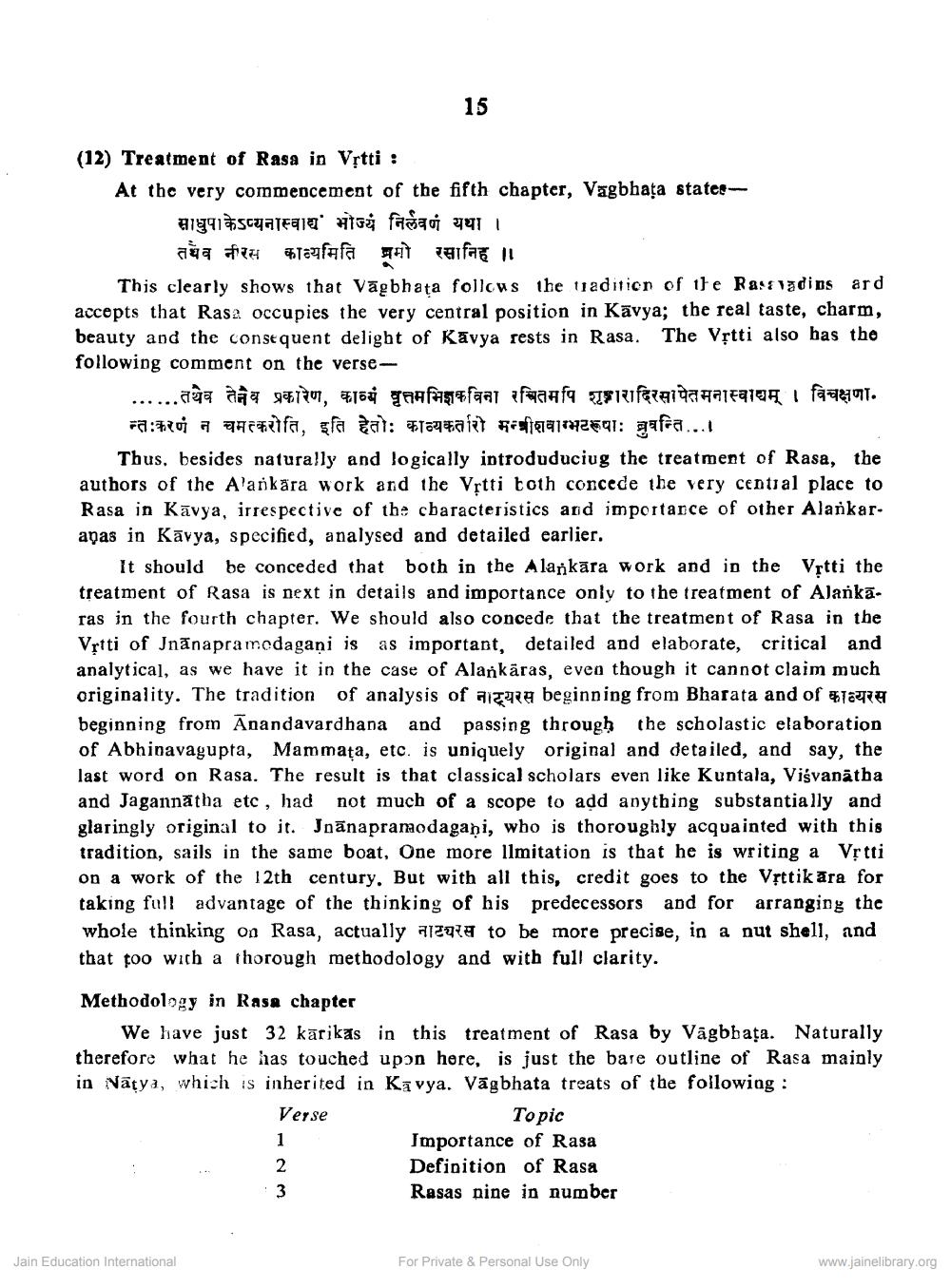________________
1.5
(12) Treatment of Rasa in Vrtti : At the very commencement of the fifth chapter, Vägbhața state
साधुपाकेऽप्यनास्वाध भोज्यं निर्लवणं यथा ।
तथैव नीरस काव्यमिति प्रमो रसानिह ।। This clearly shows that Vāgbhata follows the uadition of the Rass vadins ard accepts that Ras2 occupies the very central position in Kävya; the real taste, charm, beauty and the consequent delight of Kavya rests in Rasa. The Vștti also has the following comment on the verse
......9a aga 987207, 2198 nafagfaat farfa riferata 149194 i faqau. न्त:करणं न चमत्करोति, इति हेतोः काव्यकतरोि मन्त्रीशवाग्भटरूपाः ब्रुवन्ति...।
Thus, besides naturally and logically introduducing the treatment of Rasa, the authors of the Alarkara work and the Vitti toth concede the very central place to Rasa in Kavya, irrespective of the cbaracteristics and importance of other Alankar. apas in Kavya, specified, analysed and detailed earlier.
It should be conceded that both in the Alapkāra work and in the Vitti the treatment of Rasa is next in details and importance only to the treatment of Alankaras in the fourth chapter. We should also concede that the treatment of Rasa in the Vrtti of Jnānapramodagani is as important, detailed and elaborate, critical and analytical, as we have it in the case of Alankāras, even though it cannot claim much originality. The tradition of analysis of aigre beginning from Bharata and of $479 beginning from Anandavardhana and passing through the scholastic elaboration of Abhinavagupta, Mammața, etc. is uniquely original and detailed, and say, the last word on Rasa. The result is that classical scholars even like Kuntala, Visvanatha and Jagannatha etc , had not much of a scope to add anything substantially and glaringly original to it. Jnānapramodagani, who is thoroughly acquainted with this tradition, sails in the same boat, One more limitation is that he is writing a Vịtti on a work of the 12th century. But with all this, credit goes to the Vịttik āra for taking full advantage of the thinking of his predecessors and for arranging the whole thinking on Rasa, actually alzata to be more precise, in a nut shell, and that too with a thorough methodology and with full clarity.
Methodology in Rasa chapter
We have just 32 kārikas in this treatment of Rasa by Vägbbața. Naturally therefore what he has touched upon here, is just the bare outline of Rasa mainly in Nātya, which is inherited in Kavya. Vāgbhata treats of the following: Verse
Topic Importance of Rasa
Definition of Rasa 3
Rasas nine in number
..
2
Jain Education International
For Private & Personal Use Only
www.jainelibrary.org




